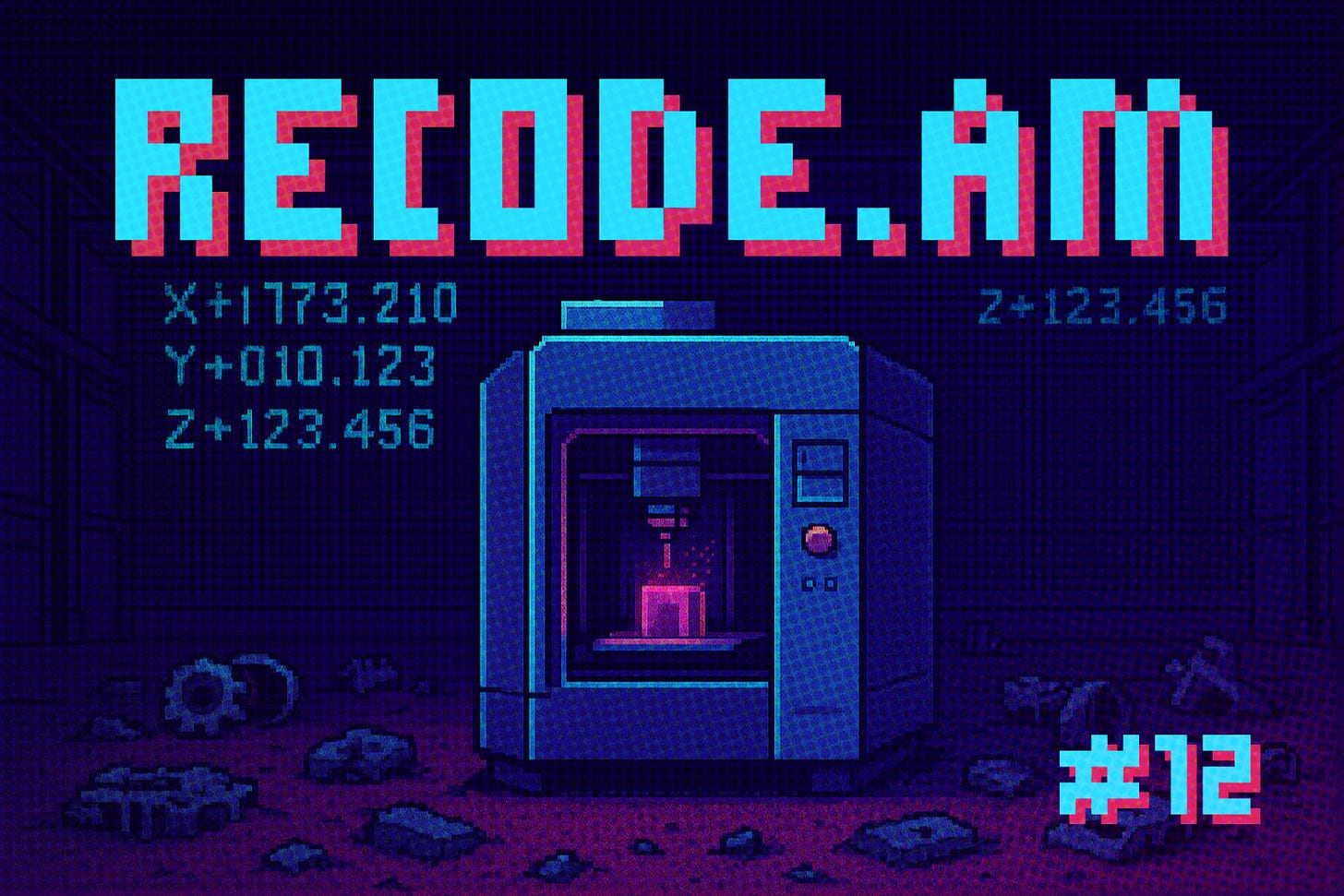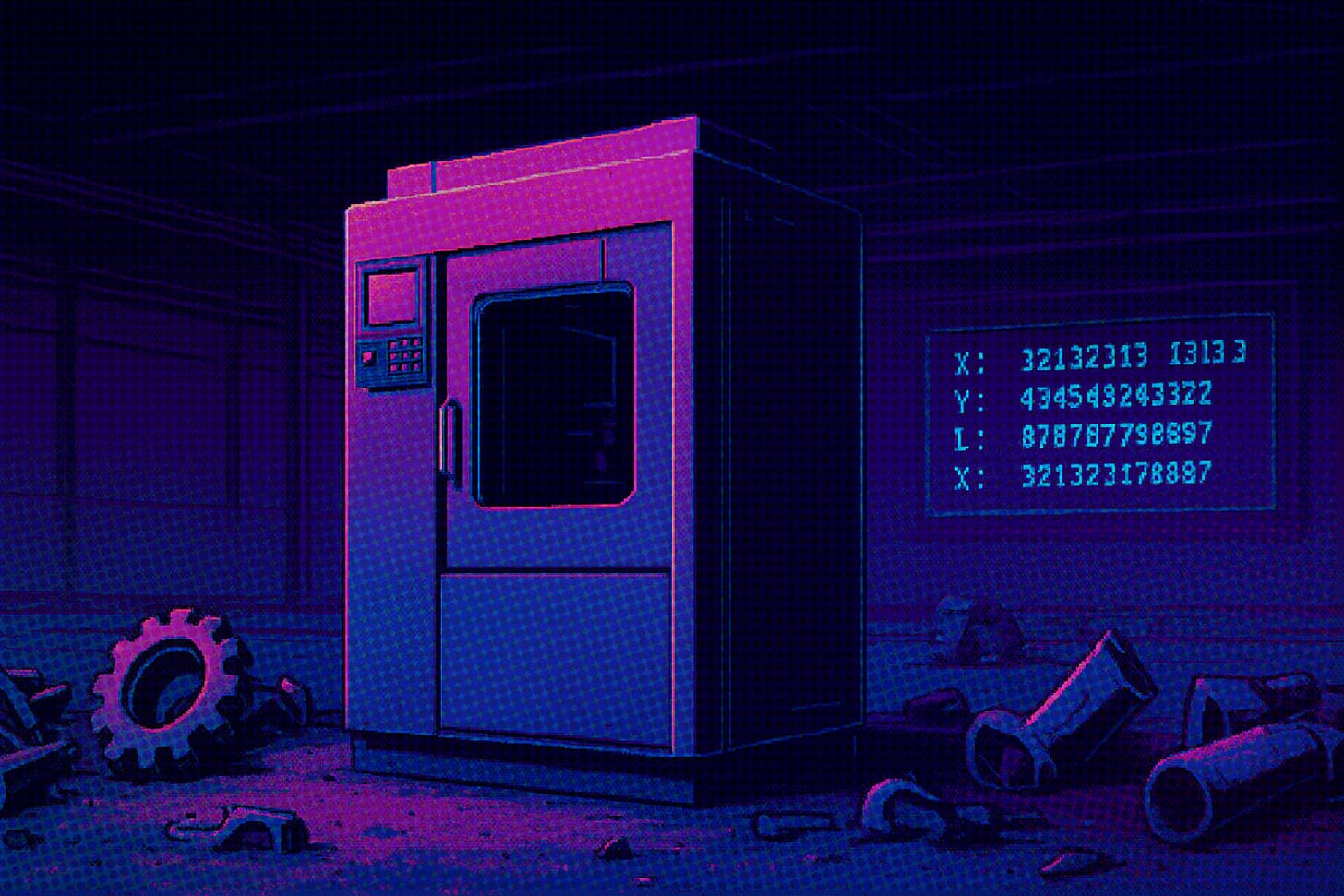Why „global settings” don’t work in metal AM
RECODE.AM #12
Over the past decade, industrial metal 3D printing has rapidly evolved from an experimental technology, reserved for research laboratories and a few pioneering production facilities, into a tool increasingly used in the serial manufacturing of high–value-added components.
I described this briefly in my recent article on the end of the Third Era of the AM Market.
Setting aside the collapse of Desktop Metal (and other companies riding the AM overhype wave), the fact remains that with the development of machines, metal powders, and process control methods, additive manufacturing has shifted in perception—from a prototyping tool toward a fully fledged production technology.
However, there is still one area that lags behind other aspects of the industry: build preparation software.
Current, widely used software solutions focus mainly on part layout on the build plate and the generation of support structures.
While these elements are undoubtedly critical, this approach reduces the entire preparation process to two steps: optimizing placement and defining a handful of global parameters that will be applied to all parts in the job.
In theory, this may seem convenient—the user sets a unified set of parameters, such as scan speed, laser power, or layer thickness, and then starts the build.
In practice, however, it means limiting the ability to optimize individual components according to their specific requirements.
Imagine a job consisting of five parts with different geometries, masses, and purposes. One might be a thin-walled cooling channel for the aerospace industry, another a massive structural component, and yet another a part requiring an exceptionally smooth surface finish. Applying the same settings to each of them is like trying to paint all the details with one broad brush—simple and quick, but without accounting for nuance.
This limitation is particularly visible in metal AM, where small differences in parameters can translate into significant changes in the quality, strength, and mechanical properties of the finished components.
The use of global parameters stems in part from historical constraints
In the early days of the technology, when computing power was limited and user interfaces had to be simple, tools were designed to make the process as straightforward as possible. But as metal 3D printing becomes a production process for diverse batches, this approach is becoming a serious obstacle.
Build preparation is not just the logistics of arranging models on a platform. It is also—and perhaps above all—the precise tailoring of process settings to the specific requirements of each part: from geometry, through function, to the material and its interaction with print parameters.
This means the ability to vary scanning strategies within a single build, or even within a single part, to control parameters in specific areas of the model, or to optimize toolpaths in real time.
Such an approach can reduce build times, minimize residual stresses, improve mechanical properties, and reduce the need for secondary finishing.
An example of a company that has embraced this philosophy from the outset is Dyndrite—a developer of a platform that allows the assignment of individual parameters down to the smallest segments of a part.
Such tools not only open new possibilities for optimization, but also encourage thinking of build preparation as a full-fledged engineering stage, rather than just a preliminary step before printing.
In traditional manufacturing processes, fine-tuning parameters is the norm
A machinist, lathe operator, or press technician will always adjust settings for a specific part. Additive manufacturing must reach a similar level of maturity if it is to become the technology of choice for producing critical components.
Modern platforms—including solutions offered by Dyndrite—enable the generation of machine instructions within fully scriptable environments, where engineers define rules and conditions for specific regions of a model.
This approach is fundamentally different from traditional point-and-click interfaces, as it provides complete freedom to tailor the process to a specific goal.
The result? The ability to produce parts of higher quality while simultaneously reducing production time—exactly what industry demands.
In recent years, platforms have emerged that have been designed from the ground up with this approach in mind.
Their developers understand that precise process control requires access to parameters at a microscopic level—from defining scanning strategies in specific sections, through exposure sequences, to dynamically adjusting laser power in response to predicted heat buildup in the material.
The result is tools that allow engineers to define a unique set of parameters for each component, and even for selected areas within a single model.
Importantly, the development of such software not only increases quality and repeatability but also shortens build times.
The ability to optimize the order in which parts are printed, minimize nonproductive laser movements, and intelligently manage heat translates into measurable time savings. In the context of industrial production, where every hour of machine time is a cost, this is crucial.
Metal 3D printing is highly sensitive to changes in process parameters
Too much laser power in thin-walled structures can cause distortion or overheating, while too little can result in incomplete fusion. An inappropriate scanning strategy can cause uncontrolled stresses, which in extreme cases lead to cracks during the build itself.
Software that allows precise parameter assignment to specific geometries therefore becomes not merely a convenience, but a necessity.
It is worth noting that similar challenges also occur in other additive technologies, such as polymer 3D printing using FDM, SLS, or MJF, although the consequences may be less severe than in metals.
In polymer-based processes, varying parameters can improve flexibility, tensile strength, or high-temperature resistance in different sections of a single component.
In ceramic or carbon composite printing, appropriate parameter control can determine thermal conductivity or wear resistance. In all these cases, precise software becomes the bridge between the machine’s capabilities and the designer’s intent.
As industry demands ever shorter lead times, higher quality, and lower unit costs, the role of intelligent software will only grow.
It will determine whether metal 3D printing remains a niche solution for specialized applications or becomes a widely adopted manufacturing method.
It’s important to remember that progress in materials, lasers, or machine mechanics will deliver limited benefits if their use is constrained by outdated build-prep tools.
Looking ahead, it’s reasonable to predict that fully optimized additive manufacturing processes will be based on feedback loops between the machine, the software, and analysis of data from previous builds.
It will be an environment where parameters are dynamically adjusted in real time, and decisions about printing strategies are made based on predictive modeling of material behavior.
To achieve this, the industry must shift from the “set global parameters and start” mindset to “control every aspect of the process based on knowledge and data.”




